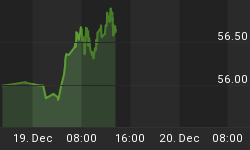US factory orders tanked again this morning, and were generally reported that way at first. To take just a few of the low-lights:
-
Factory orders have declined in eight of the last nine months.
-
Orders for transportation equipment fell 2.4 percent while orders for computers and consumer goods-related equipment also fell by varying amounts.
-
Last month's durable goods orders were revised to -0.3% from the original +1%.
-
Business inventories remain at near-record high levels.
Then the Census Bureau reported better than expected car sales, leading some outlets to revise their factory orders stories with a positive spin. Here's a representative snippet from Reuters:
WASHINGTON (Reuters) - New orders for U.S. factory goods fell in April as demand for transportation equipment and other goods weakened, suggesting that manufacturing remained constrained by a strong dollar and spending cuts in the energy sector.
But the outlook for manufacturing and the broader economy got a lift from another report on Tuesday showing automobile sales in May on track for the quickest pace in more than nine years.
Strong auto sales could boost May consumer spending, which was flat in April after households cut back on purchases of motor vehicles. A rebound in consumer spending, which accounts for more than two-thirds of U.S. economic activity, is being eyed after slowing down sharply in the first quarter.
But -- illustrating the power of reporters and headline writers to shape the news by deciding what goes where in an article -- further down in most of these stories is something like this:
Analysts have pointed to easier consumer credit as one reason for increased sales since the recession. On Monday, Experian reported the average length of loans for new and used vehicles in the United States in the first quarter hit record highs, and nearly 30 percent of new-vehicle loans have pay-back periods longer than six years.
The fact that nearly a third of today's car buyers are locking themselves into loans that run until at least 2021 would seem to be the most important part of the story, since it's not what you buy but how you pay for it that matters going forward. With car loans, as with student loans, money borrowed and spent today comes at the expense of spending that might otherwise have happened tomorrow. Students graduating with crushing debts won't be buying houses anytime soon, while today's new car buyers won't be back in the showroom until their "car mortgages" are paid off.
So the auto industry's strength, driven as it is by long-term subprime lending, is actually a sign of weakness. These days even superficially good numbers are bad.















